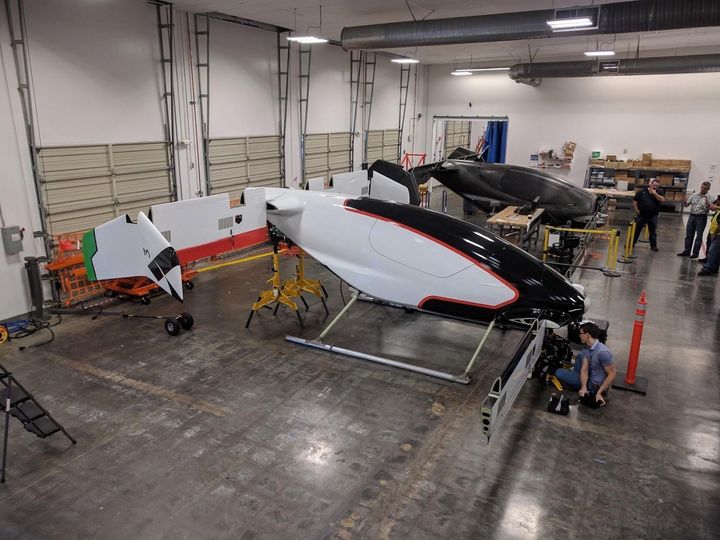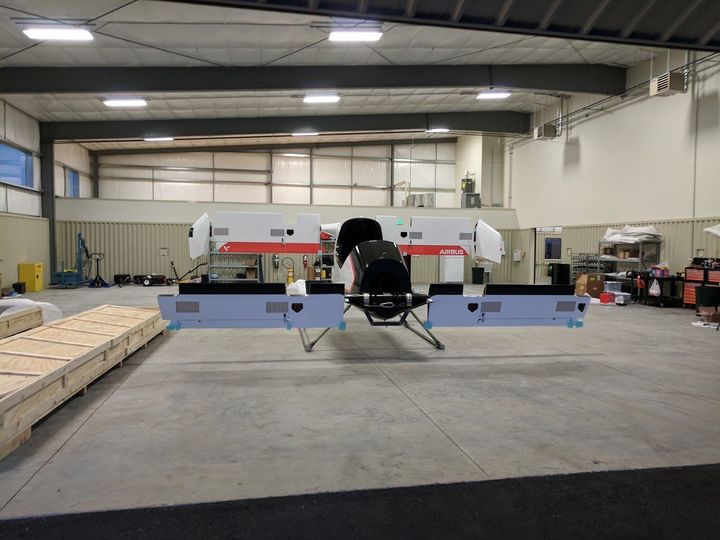Airbus has given us our first glimpse of its Vahana self-flying taxi.
Originally unveiled as the CityAirbus project, it has evolved into the Vahana concept you can see resting in one of Airbus’ R&D hangers in Santa Clara, California.

The Vahana is a small, lightweight self-flying aircraft that uses eight electrically-powered engines to propel passengers from A to B.
It’ll have a range of around 62-miles and just like taxis today, it’ll be summoned using a smartphone app.
Airbus, just like Uber, wants Vahana to eventually replace land-based taxi services by offering something that’s quicker, more convenient and a lot faster.
If that wasn’t enough incentive, Airbus is hoping to price journeys in the Vahana at around £1-2 per mile, making it as expensive as normal taxis.

By using a revolutionary electric motor instead of a conventional combustion engine the Vahana doesn’t produce any harmful emissions.
Electric has additional benefits including fast-charging, easy maintenance and reduced running costs because you’re not paying current fuel prices.
Unlike Uber’s plans for a flying taxi, Airbus’ won’t use a pilot. Instead this aircraft is completely self-piloted using an army of sensors and computers aboard it to help navigate through what will inevitably become quite a congested piece of airspace.
While the company had initially hoped to start test-flights this year, the prototype has only just been moved to its new home at the Eastern Oregon Regional Airport.
From there the team will finalise work on the prototype with the hope being to start live flights some time next year. What’s potentially even more astonishing is that Airbus (and Uber for that matter) both believe we’ll actually be able to ride one of these as a customer by 2020.
